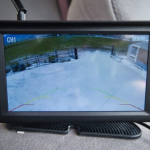In today’s hyperconnected world, offering public WiFi has become an expectation rather than a luxury. To effectively manage a public WiFi service like LPB Piso WiFi, you must ensure more than just providing a router and password. One key component is managing the login process and session timeout (also known as “pause time”). For systems like these, you typically access the router’s settings by navigating to lpb piso wifi 10.0.0.1 pause time login in a web browser. Here, you can customize the login page to require user credentials for access, helping secure the network. Additionally, adjusting the pause time is essential for controlling how long users stay connected before they need to re-authenticate, ensuring optimal use of the network. By managing user sessions, setting timeout limits, and implementing a secure login system, you can provide a stable and controlled internet experience for all users while maintaining the security of the network.
This guide outlines the essential steps to streamline and optimize your public WiFi setup.
1. Know Your Users and Their Needs
Before launching or upgrading a WiFi network, it’s crucial to understand the expected user base:
Will the network serve casual browsers or data-heavy users like remote workers and gamers?
Is it for short-term access (like in a waiting room) or long-term use (such as in co-working spaces)?
Your answers will guide decisions on bandwidth allocation, session control, and user experience.
2. Invest in the Right Equipment
Public WiFi networks thrive on strong hardware foundations. To ensure smooth operation:
Choose routers and access points that support the latest WiFi standards (e.g., WiFi 6).
Use enterprise-grade equipment for environments expecting high traffic.
Consider mesh networking for larger or complex areas.
Don’t forget to position your access points strategically to minimize dead zones and maximize signal strength.
3. Secure the Network with Smart Protocols
Security is a critical part of public WiFi management. Open networks are convenient, but they’re also vulnerable.
Key Security Measures:
Enable WPA3 encryption for modern protection.
Set up a firewall and enable traffic filtering.
Use a captive portal to authenticate users before granting access.
Additionally, implement session monitoring tools to identify suspicious behavior or heavy bandwidth consumption in real time.
4. Manage Bandwidth and Access Limits
To prevent abuse and ensure fair usage, managing user bandwidth is vital.
Create tiered access plans (e.g., free basic and premium high-speed).
Limit session duration or data usage per user.
Use Quality of Service (QoS) settings to prioritize essential traffic.
A common setup seen in Piso WiFi systems, especially those using the lpb piso wifi 10.0.0.1 pause time login feature, allows users to pause their time and resume later. This model is popular because it lets users control their usage and helps operators manage network load more effectively.
5. Design an Intuitive User Login Experience
The login experience should be seamless, not a barrier. Make it as user-friendly as possible:
Use one-click logins, social media sign-ins, or mobile OTPs.
Create a branded captive portal with relevant information and ads.
Offer login instructions in both local languages and English to enhance accessibility.
Systems like Piso WiFi, mentioned earlier, often use self-service login pages accessible through local addresses (e.g., 10.0.0.1) where users can pause or resume their internet time.
6. Monitor Network Performance in Real-Time
Continuous monitoring is key to identifying problems before they escalate. Use tools like:
Ubiquiti UniFi, Cisco Meraki, or open-source dashboards.
Real-time traffic monitoring to detect overloads or slowdowns.
Automated alerts for outages or bandwidth spikes.
This kind of visibility ensures that your network remains reliable and easy to troubleshoot.
Also Read: Comparative Negligence: How It Affects Your Injury Compensation
7. Plan for Future Growth
If your user base increases or usage patterns change, your network should scale accordingly.
Use modular hardware that’s easy to upgrade.
Ensure cloud-based management for remote updates and scaling.
Partner with ISPs who can offer scalable bandwidth plans.
WiFi demand tends to grow fast—plan for it from the start.
8. Offer Value-Added Features
Beyond internet access, public WiFi can serve as a marketing and monetization tool:
Display ads during login or browsing.
Collect emails or phone numbers for newsletters or SMS campaigns.
Offer premium plans or longer sessions for a fee.
Again, Piso WiFi systems are a great example of value-added public internet. Their ability to manage time per session and pause usage through lpb piso wifi 10.0.0.1 pause time login makes them popular in cafes, sari-sari stores, and waiting areas across Asia.
9. Stay Compliant with Local Regulations
Ensure your WiFi services meet all legal and data protection standards in your country or region.
Log user access data if required by law.
Display terms of service and privacy notices.
Follow cybersecurity guidelines to avoid liability.
Non-compliance can lead to fines or service restrictions, so consult a legal expert if necessary.
10. Educate Users on Safe Browsing Practices
Public WiFi users are often unaware of online risks. Use the captive portal to promote:
Safe browsing tips (e.g., avoid online banking on public networks).
The benefits of using VPNs.
Awareness of phishing or scam websites.
A simple reminder can go a long way in protecting your users and reducing support issues.
Final Thoughts
Managing public WiFi efficiently isn’t just about internet speed—it’s about offering a secure, user-friendly, and sustainable service. Whether you’re a café owner, event organizer, or local government entity, optimizing your WiFi infrastructure can improve customer satisfaction and even create new revenue streams.
By integrating smart technologies like lpb piso wifi 10.0.0.1 pause time login, investing in scalable infrastructure, and prioritizing user security, you’ll ensure your network stands out for all the right reasons.







